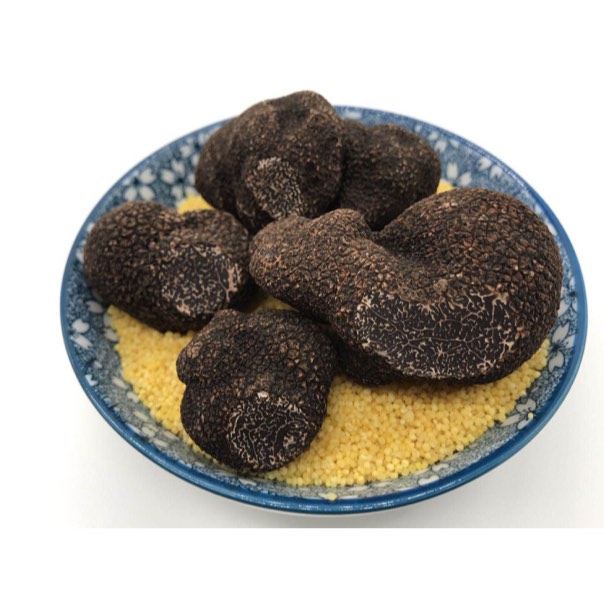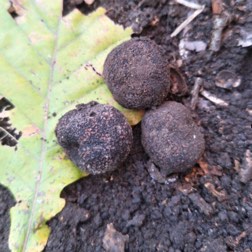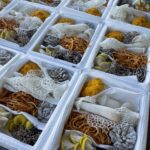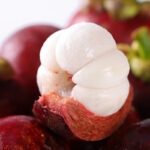Tibetan Black Truffles – 250g
¥286.00
Often called the diamond of the culinary world, a truffle is a rare, edible mushroom that is considered to be a delicacy due to its intense aroma and characteristic flavour. They have a firm texture and are most often shaven on top of food before serving, although they can also be used to infuse flavour into dishes. Though there are hundreds of different species, only some — mostly those found in the genus Tuber — are considered delicacies. Truffles grow underground in symbiotic relationships with trees and are difficult to find; as a result, they are usually harvested in the wild by trained hogs and dogs.
Truffles are usually classified mainly based on their appearance, smell, and taste. Found in a variety of regions around the world, many are commonly known by their location rather than their technical name. Their value varies depending on their rarity and specific aromatic qualities; the rarest are the most expensive food in the world.
Types of Truffles
There are over 180 types of truffle, of which about 10 are actually valued as tasty, culinary delights. At the top of the truffle food chain is the Perigord Black Truffle from France. The Perigord is considered to be the very best and the prices for them reflect this – upwards of US$1000 per kilogram is not uncommon. Second would be the Italian white or Piedmont truffle which has the strongest smell of all truffles.
Our Tibetan Black Truffles are grown in the Ganzi Tibetan Autonomous Prefecture, also known as Garzê in Tibetan. It is located in western Sichuan Province, China and is set amongst the scenic high alpine mountains of the province. So technically these are Chinese truffles. But that is by no means a bad thing. These are hand-harvested (as all truffles are all across the world) and then packed and shipped within 24 hours.
250 grams of truffles delivered to you for ¥286 – delivery included. That works out to about US$171 a kilogram – less than 20% of the cost of Perigord Black Truffles.
Culinary Use
Truffles must be carefully handled to preserve their aroma and flavour. They should be cleaned of any dirt or debris, washed with water, and dried with a paper towel. To develop their aroma after being harvested, they should be placed in an airtight container lined with paper towels and stored in the refrigerator for approximately three days. They can be stored in a glass jar for several months, but should never be dried as this will cause them to lose their pungency.
As cooking dissipates their flavour, truffles are most often served raw. They can be sliced, scraped, or grated on top of ready-to-serve dishes, sauces, or soups. They also pair well with fattier foods, such as cheeses, butter, oils, and eggs.
Infusing flavour into foods creates another use for the truffle. Thin slices of the fungus inserted just under the skin allow meats to readily absorb the flavour. Only small amounts are needed to make truffle butter, as the aroma will flavour the entire batch. It should be noted that, while they can be added to olive oil to infuse their flavour, most “truffle oil” doesn’t actually contain any truffles.










Reviews
There are no reviews yet.